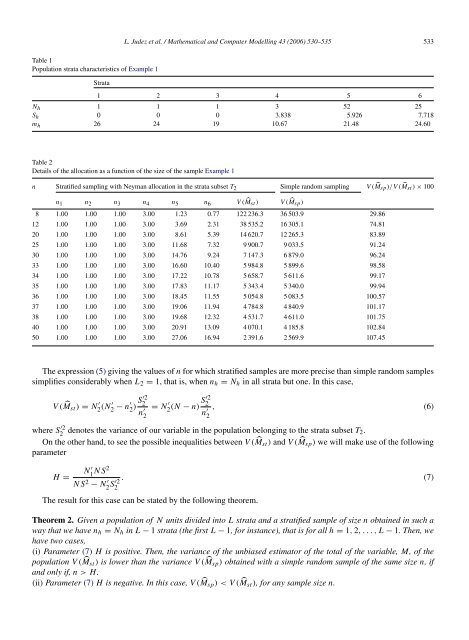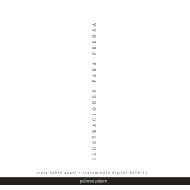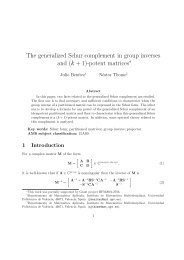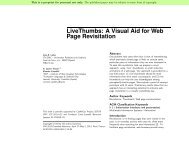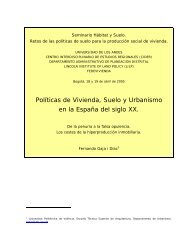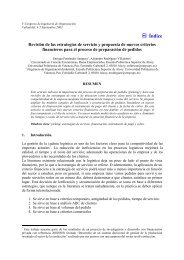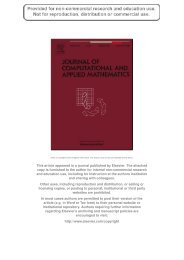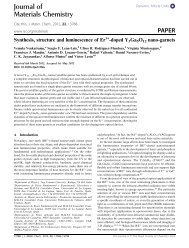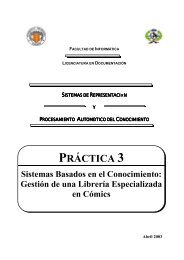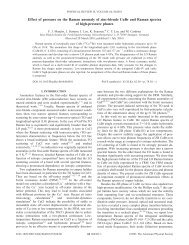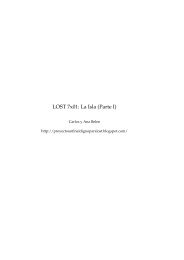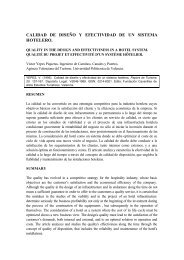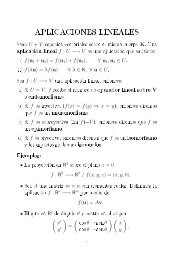pdf file - Universidad Politécnica de Valencia
pdf file - Universidad Politécnica de Valencia
pdf file - Universidad Politécnica de Valencia
You also want an ePaper? Increase the reach of your titles
YUMPU automatically turns print PDFs into web optimized ePapers that Google loves.
L. Lichtenbergová et al. Parasite ImmunologyG, 50 μg/mL transferrin, 5 μg/mL insulin, 100 μg/mLstreptomycin, 10% FCS to a final <strong>de</strong>nsity of 0·025 × 10 6 cellsper ml at 37°C. Stimulation was performed in round-bottomed96-well microtitre plates (Nunc) at 37°C and 6% CO 2. IL-3(2·5 ng/mL; a kind gift from Kirin Company, Gunma,Japan) was ad<strong>de</strong>d to all wells to enhance IgE-mediated IL-4 production by basophils. Basophil cultures were incubatedwith TrH and TrE/S overnight; ionomycin (2 μm) and polyclonalgoat anti-IgE (50 ng/mL; Biosource) served as positive controls.After stimulation, culture supernatants were collectedfor the measurement of IL-4 by sandwich ELISA. Briefly,IL-4 release was measured on flat-bottomed 96-well microtitreplates (Maxisorp F96, Nunc) by the Eli-Pair assay (Diaclone)according to the manufacturer’s protocol.Statistical analysisStatistical analyses of mouse sera were performed usingStu<strong>de</strong>nt’s t-test and values of P < 0·001, P < 0·01, andP < 0·05 were consi<strong>de</strong>red significant. Data are the mean ofa minimum of four to five samples per time point. Correlationsbetween levels of antigen-specific IgG and total IgE in humansera were <strong>de</strong>rived using the Spearman rank correlation test.RESULTST. regenti infection induces IgM, IgG1 and IgG2bantibodies in mice against cercarial antigensExposure of mice to a single dose of infective T. regenticercariae induced a significant increase in the level ofanti-TrH IgM antibodies <strong>de</strong>tected at 10 days after infection(Figure 1a). The level increased progressively after eachinfection to reach a peak on day 10 after the 4th infectionwith the OD being 2·26-fold greater than in naïve mice. Inthe absence of further infection, there was a slow <strong>de</strong>cline inlevel of IgM such that 120 days after the last infection theamount of IgM was not significantly elevated comparedwith that in naïve mice. Treatment of TrH antigens withsodium periodate revealed that a substantial component ofthe IgM response is directed against carbohydrates since atonly one sampling time (day 10 after the 4th infection;P < 0·05) are there significantly elevated IgM antibodiesagainst periodate-treated TrH antigens (Figure 1a).A significant increase in the level of anti-TrH IgG1antibodies was <strong>de</strong>tected only after the second infection, andthere were further increases after the 3rd and 4th infections(Figure 1b). Antigen-specific IgG1 antibodies remaine<strong>de</strong>levated over the remaining time course <strong>de</strong>spite there beingno further exposure to cercariae and the level at day 120 wasstill significantly greater (P < 0·001) compared with naïvemice (11·5-fold greater). Similar to the pro<strong>file</strong> of IgG1, levelsFigure 1 Exposure of mice to T. regenti causes the production ofcercarial-specific IgM, IgG1 and IgG2b antibodies. IgM (a),IgG1 (b), and IgG2b (c) antibodies against T. regenti cercarialhomogenate (TrH) in the sera of mice exposed to 1–4 infections.The binding of antibodies to carbohydrate structures was<strong>de</strong>termined following treatment of TrH with sodium periodate(--); versus control mock-treated antigen (--). Data points arethe mean ± SEM for five mice. Statistical significances (*P < 0.05;**P < 0·01; ***P < 0·001) are relative to naïve mice (day 0).588 © 2008 The AuthorsJournal compilation © 2008 Blackwell Publishing Ltd, Parasite Immunology, 30, 585–595


